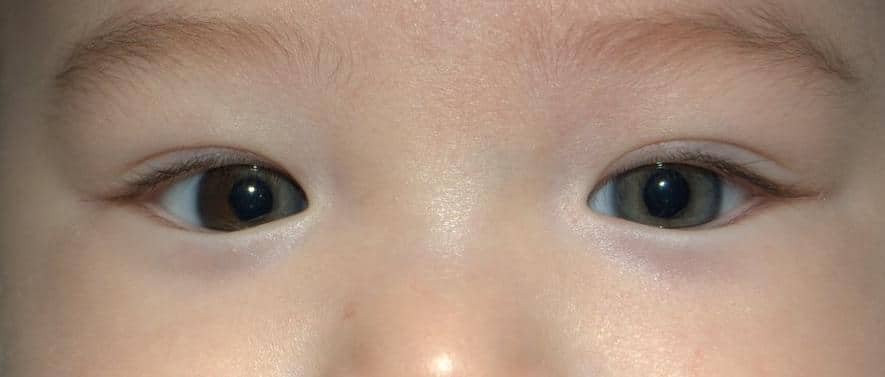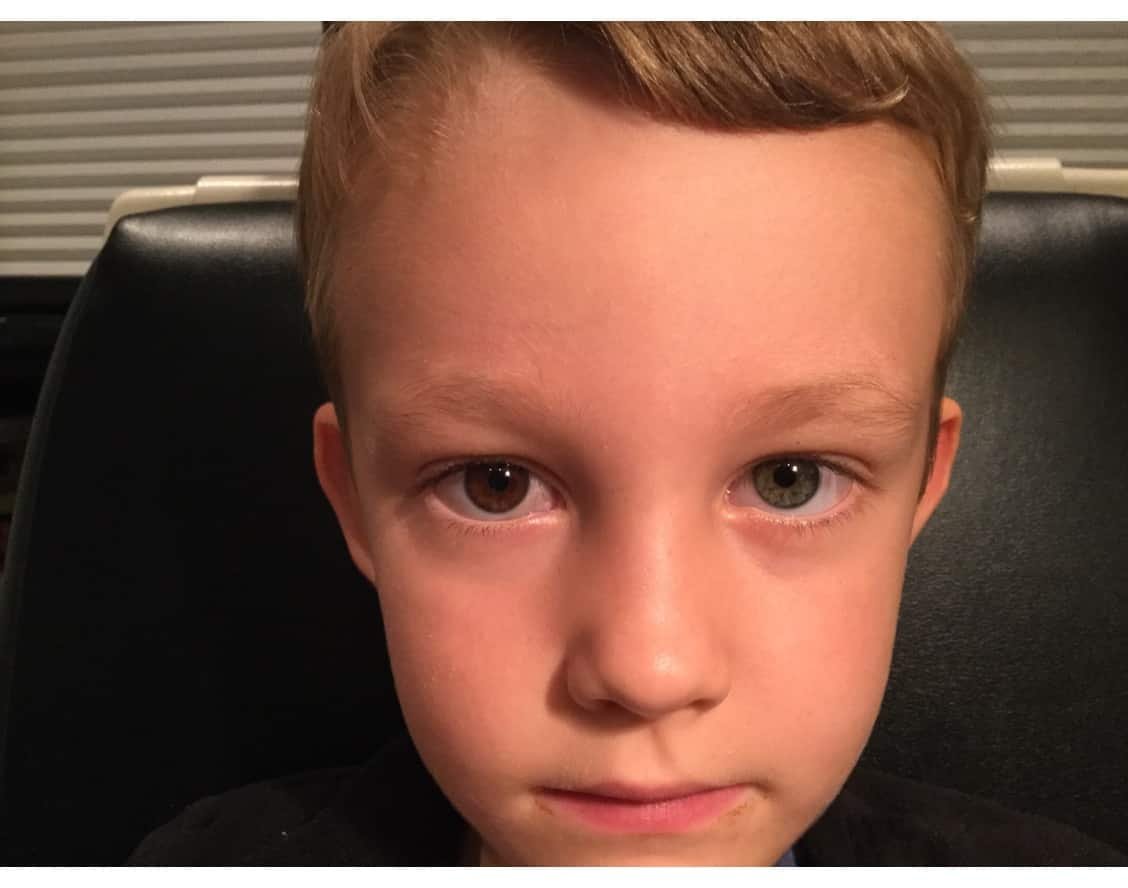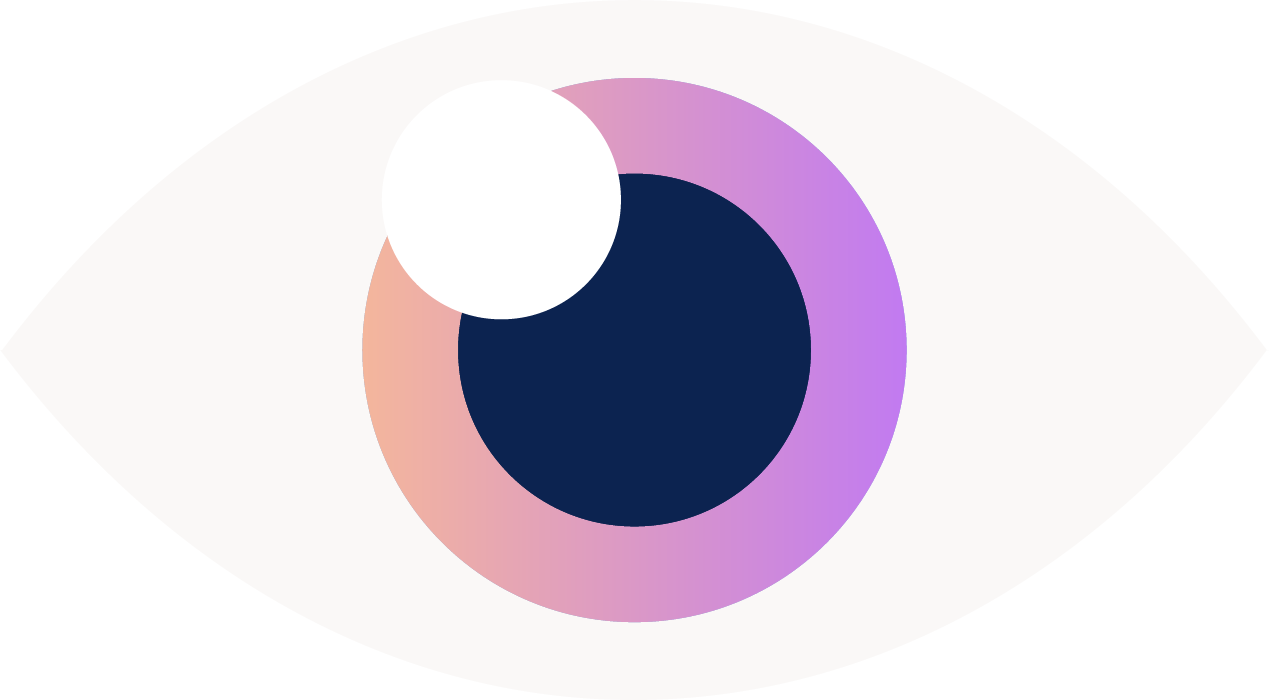Will my baby's eye color change?
As a pediatric ophthalmologist, this question is one of the most common ones I get. Parents bring their adorable baby in with huge, beautiful blue or green eyes and they themselves have brown eyes. They want to know if the light colored eyes will "stay." The part of the eye which gives it color is called the iris. Melanocytes are cells which contain melanin, present in the iris. The number of melanosomes doesn't differ between people with different eye colors. Individuals with brown eyes simply have more melanin in their melanosomes in the irises than individuals with blue eyes.
The part of the eye which gives it color is called the iris. Melanocytes are cells which contain melanin, present in the iris. The number of melanosomes doesn't differ between people with different eye colors. Individuals with brown eyes simply have more melanin in their melanosomes in the irises than individuals with blue eyes. We used to think that eye color was controlled by just one gene and blue eyes were recessive and brown eyes were dominant. And, that 2 parents with blue eyes could only have a blue eyed baby. But, that's not quite true, though uncommon, a brown eyed kid can have 2 blue eyed parents. The inheritance of eye color is much more complicated than previously thought. There are actually 16 different genes responsible for eye color, but the main two sit next to each other on chromosome 15. These 2 genes control the amount and quality of melanin produced. When babies are born, the melanocytes do not produce very much melanin. That's why a large number of babies have light eyes. Even my 3 kids have grayish/lighter eyes when they were born.
We used to think that eye color was controlled by just one gene and blue eyes were recessive and brown eyes were dominant. And, that 2 parents with blue eyes could only have a blue eyed baby. But, that's not quite true, though uncommon, a brown eyed kid can have 2 blue eyed parents. The inheritance of eye color is much more complicated than previously thought. There are actually 16 different genes responsible for eye color, but the main two sit next to each other on chromosome 15. These 2 genes control the amount and quality of melanin produced. When babies are born, the melanocytes do not produce very much melanin. That's why a large number of babies have light eyes. Even my 3 kids have grayish/lighter eyes when they were born. With time, usually when babies are between 6 months-3 years, the melanin production increases and then stabilizes. The melanin in your iris is not affected the way the way the melanin in your skin is (otherwise, everyone's eyes would become brown when they are in the sun for a prolonged period of time). After age 3, very little change occurs in the color of eyes.
With time, usually when babies are between 6 months-3 years, the melanin production increases and then stabilizes. The melanin in your iris is not affected the way the way the melanin in your skin is (otherwise, everyone's eyes would become brown when they are in the sun for a prolonged period of time). After age 3, very little change occurs in the color of eyes.
 There are many disorders which can cause a change in iris color later in life. Some of these are vision threatening, conditions such as albinism, or and if you notice any change in your child's eye color past the age of 3, please see your ophthalmologist.
There are many disorders which can cause a change in iris color later in life. Some of these are vision threatening, conditions such as albinism, or and if you notice any change in your child's eye color past the age of 3, please see your ophthalmologist. There are many causes for heterochromia, some of which require urgent evaluation and management, such as possible tumors in the brain or chest (Horner's syndrome), inflammation of the eye (Fuchs heterochromic iridocyclitis) or even a type of glaucoma. Some glaucoma medications can also change hazel or green eyes to darken, as can Latisse, the eyelash growth medication (which is based on a glaucoma drop). Tumors, nevus (moles) of the iris can cause a darkening of the iris, as can a foreign body, This article is an excellent summary of the many causes for different or changing eye colors. If you notice a difference in color between the 2 eyes, called heterochromia, please also see your pediatric ophthalmologist.
There are many causes for heterochromia, some of which require urgent evaluation and management, such as possible tumors in the brain or chest (Horner's syndrome), inflammation of the eye (Fuchs heterochromic iridocyclitis) or even a type of glaucoma. Some glaucoma medications can also change hazel or green eyes to darken, as can Latisse, the eyelash growth medication (which is based on a glaucoma drop). Tumors, nevus (moles) of the iris can cause a darkening of the iris, as can a foreign body, This article is an excellent summary of the many causes for different or changing eye colors. If you notice a difference in color between the 2 eyes, called heterochromia, please also see your pediatric ophthalmologist.

